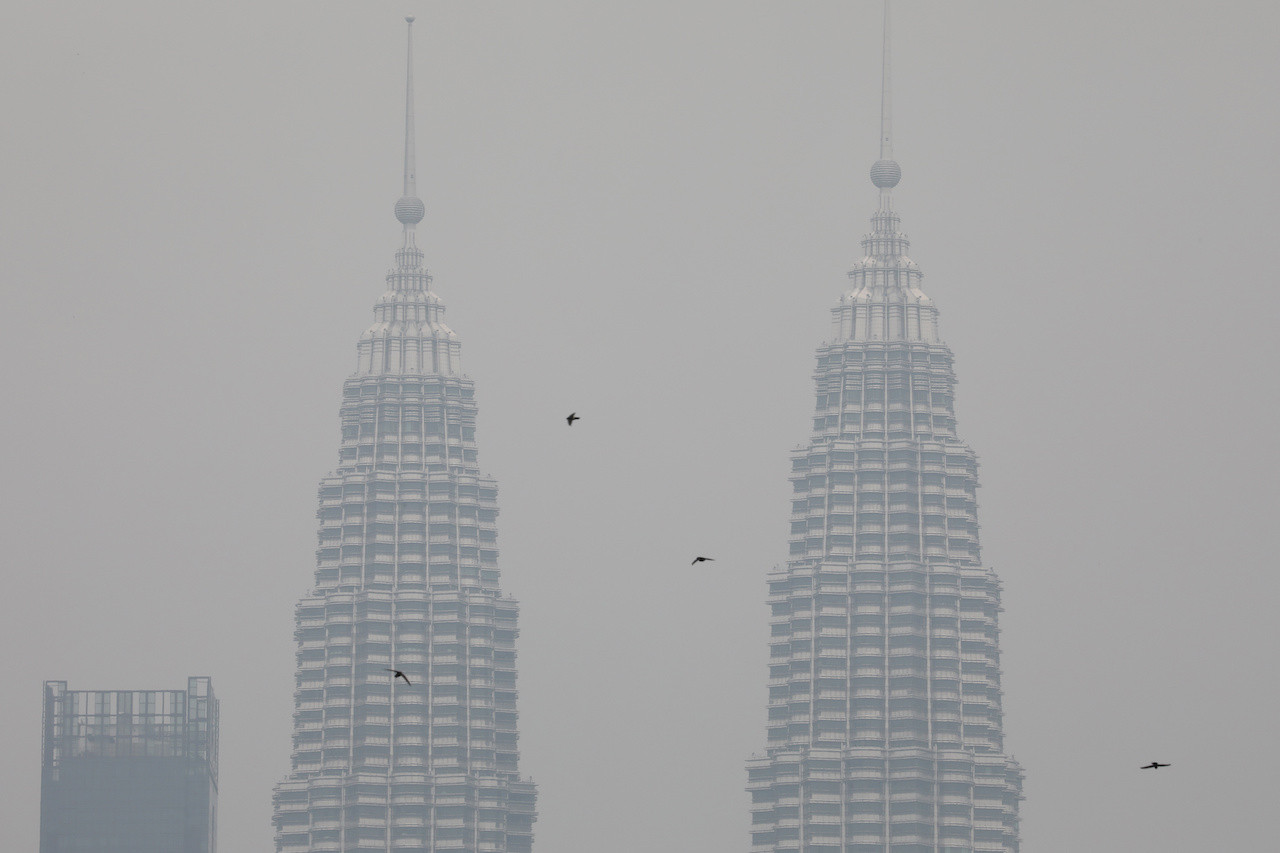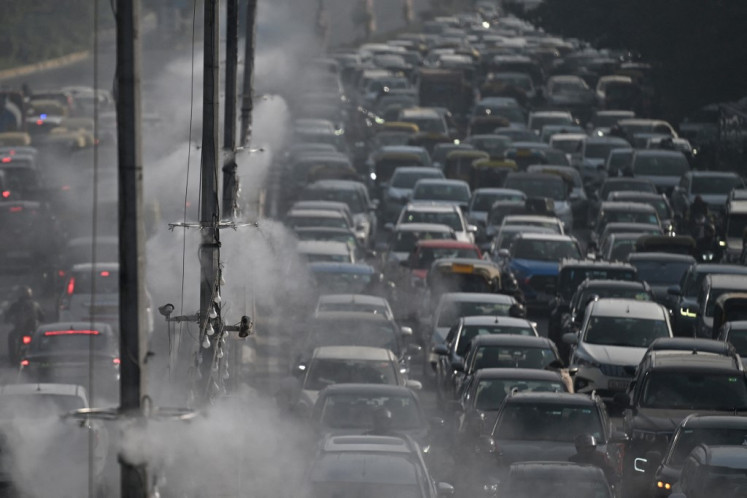Popular Reads
Top Results
Can't find what you're looking for?
View all search resultsPopular Reads
Top Results
Can't find what you're looking for?
View all search resultsHazy days are back again in Malaysia
The Singapore-based Asean Specialised Meteorological Centre (ASMC) had through satellite images detected 121 hotspots in Sumatra and 122 hotspots in Kalimantan, but none in Malaysia, said DOE director-general Datuk Wan Abdul Latiff Wan Jaafar.
Change text size
Gift Premium Articles
to Anyone
The haze has worsened with 13 locations in the country recording unhealthy air quality, says the Environment Department (DOE).
The Singapore-based Asean Specialised Meteorological Centre (ASMC) had through satellite images detected 121 hotspots in Sumatra and 122 hotspots in Kalimantan, but none in Malaysia, said DOE director-general Datuk Wan Abdul Latiff Wan Jaafar.
Air quality continued to deteriorate to unhealthy levels in more locations in the country, especially the west coast of the peninsula, he said.
As at 5pm yesterday, the places with the highest Air Pollutant Index (API) readings were Cheras (160), Nilai (161) and Seremban (156).
Ten other locations – Batu Muda, Putrajaya, Petaling Jaya, Shah Alam, Klang, Banting, Johan Setia, Port Dickson and Alor Gajah – recorded API readings of between 115 and 155.
Taiping, Bukit Rambai and Alor Gajah recorded unhealthy API readings earlier in the day but improved to moderate air quality levels by 5pm.
Wan Abdul Latiff also said that schools and kindergartens would be ordered to close if the API exceeds 200.
He added that outdoor activities at schools and kindergartens must cease should the API exceed 100.
As such, he said, the administration of all schools and kindergartens should constantly monitor the API and if the level exceeds 200, arrangements to stop classes will have to be made.
An API reading of zero to 50 indicates good air quality; 51 to 100 (moderate); 101 to 200 (unhealthy); 201 to 300 (very unhealthy); and 300 and above (hazardous).
Although there were brief but heavy downpours in the Klang Valley in the morning and afternoon, it only helped improve the air quality minimally in some locations.
Wan Abdul Latiff said the ASMC’s regional haze map yesterday also showed that the southern Asean region was overcast, except for the southern parts of Sumatra, Kalimantan and Nusa Tenggara Islands.
The DOE, said Wan Abdul Latiff, had intensified enforcement and increased its daily patrols at areas prone to open burning.
He said the National Open Burning Action Plan and the National Haze Action Plan had been activated to coordinate counter-action by government agencies in addressing the situation.
He also urged landowners to closely monitor areas susceptible to fires and to take preventive steps to ensure that no irresponsible parties were encroaching and carrying out open burning on their land.
Members of the public are urged to help by putting out small fires and reporting open burning to the Fire and Rescue Department at 999 or the DOE hotline at 1-800-88-2727.
Wan Abdul Latiff also said cloud-seeding operations would be carried out if the API remains at 150 for over 24 hours.
However, he said this would depend on the presence of suitable clouds and weather at the affected location.










